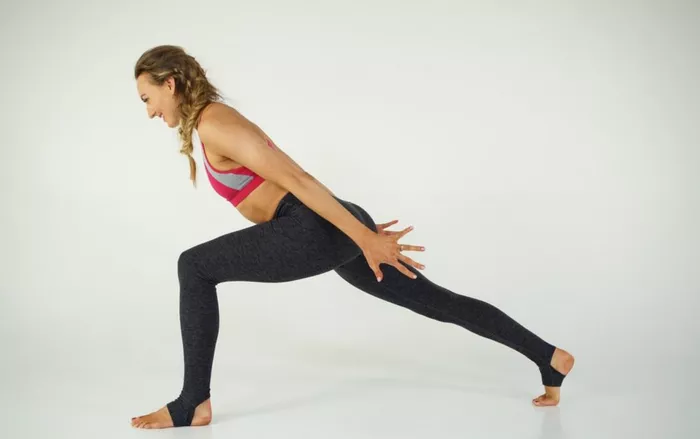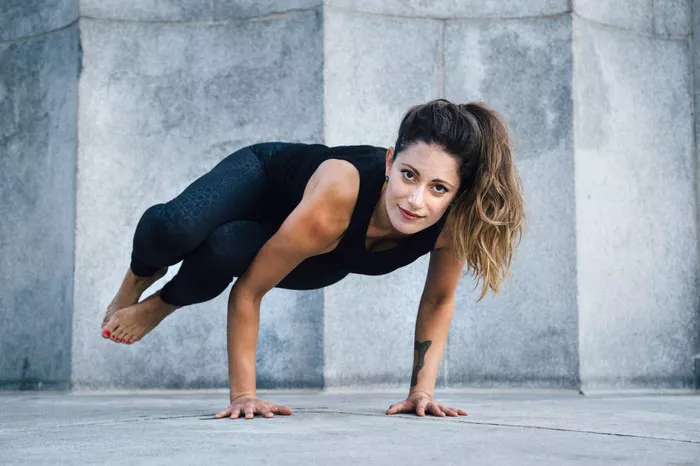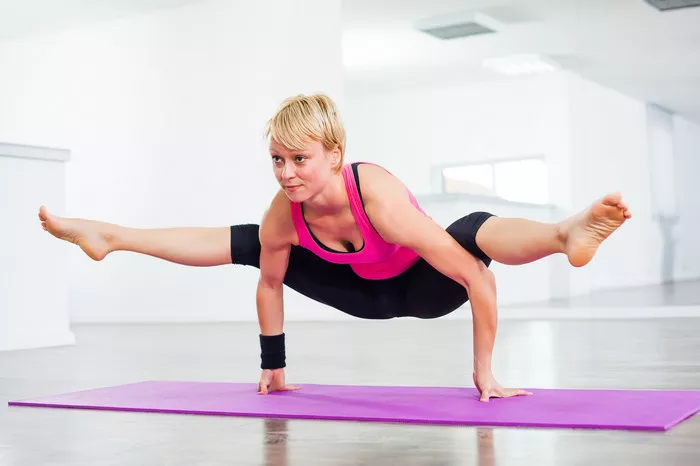The Warrior Pose, known as Virabhadrasana in Sanskrit, is a foundational sequence in yoga that strengthens the body, increases flexibility, and cultivates mental focus. Derived from Indian mythology, the Warrior Poses represent the strength and resolve of the mythical warrior, Virabhadra. These poses embody the union of strength, grace, and mindfulness, making them a cornerstone in many yoga practices.
In this comprehensive guide, we will explore the types of Warrior Poses, their benefits for the body and mind, and how to practice them safely and effectively. Whether you are a beginner or an advanced yogi, understanding the purpose and advantages of these poses can enhance your practice.
The Different Types of Warrior Poses
There are three primary variations of the Warrior Pose:
Warrior I (Virabhadrasana I): This pose involves a deep lunge with the arms extended overhead, creating a powerful stretch along the spine and front body.
Warrior II (Virabhadrasana II): A side-facing stance with arms extended parallel to the floor, focusing on balance and hip flexibility.
Warrior III (Virabhadrasana III): A balancing pose performed on one leg, emphasizing strength, stability, and core engagement.
Additionally, some advanced sequences include Humble Warrior and Reverse Warrior, which add variety and complexity to the series.
Benefits of the Warrior Poses
The Warrior Pose series offers numerous physical, mental, and emotional benefits. Let’s break these down into key categories.
1. Physical Strength and Stability
The Warrior Poses are known for their ability to strengthen multiple muscle groups:
Legs: Holding the lunge positions in Warrior I and II works the quadriceps, hamstrings, and calves. Warrior III adds a focus on the standing leg, enhancing balance and muscular endurance.
Core: The need to stabilize the torso in all Warrior Poses activates the abdominal and back muscles, improving posture and overall core strength.
Shoulders and Arms: Extending the arms in Warrior I and II builds strength in the shoulders and promotes endurance in the upper body.
By consistently practicing these poses, you can build a solid foundation of physical strength that supports daily activities and athletic pursuits.
2. Flexibility
Warrior Poses target key areas of the body to enhance flexibility:
Hips: The deep lunge positions in Warrior I and II open the hip flexors, which are often tight due to prolonged sitting.
Chest and Shoulders: The arm positions in Warrior I stretch the chest and shoulders, counteracting the effects of slouching.
Hamstrings: Warrior III provides a stretch to the hamstrings while strengthening them simultaneously.
Improved flexibility not only enhances your yoga practice but also reduces the risk of injury in everyday life.
3. Improved Posture
By encouraging spinal alignment and engaging the core muscles, the Warrior Poses help correct poor posture. This is particularly beneficial for individuals who spend long hours sitting or working at a desk.
4. Balance and Coordination
Warrior III is especially effective in challenging and improving balance. Balancing on one leg requires a strong connection between the mind and body, fostering proprioception (the awareness of body positioning in space). Regular practice enhances coordination and stability, which are crucial for overall physical well-being.
5. Enhanced Lung Capacity
In Warrior I and II, the chest is opened and expanded, allowing for deeper breaths. This can improve lung capacity and oxygen intake, making these poses beneficial for individuals looking to enhance their respiratory health.
6. Mental Focus and Concentration
The Warrior Poses demand concentration to maintain alignment and balance. Practicing these poses can help:
- Develop mindfulness by focusing on the breath and body positioning.
- Enhance mental clarity by bringing awareness to the present moment.
- Build resilience and mental endurance as you hold the poses for extended periods.
7. Stress Reduction
Like many yoga poses, the Warrior series activates the parasympathetic nervous system, which helps reduce stress and anxiety. The deliberate and grounding nature of these poses fosters a sense of inner calm.
Step-by-Step Guide to Practicing Warrior Poses
Warrior I (Virabhadrasana I)
How to Perform:
- Begin in a standing position (Mountain Pose or Tadasana).
- Step one foot back about 3–4 feet, keeping the front foot pointed forward and the back foot angled slightly out.
- Bend the front knee so it aligns directly over the ankle, forming a 90-degree angle.
- Square your hips to face the front of the mat.
- Extend your arms overhead, with palms facing each other.
- Hold the pose for 5–10 breaths, then switch sides.
Key Tips:
- Avoid collapsing the lower back by engaging the core.
- Keep the front knee aligned with the middle toe to prevent strain.
Warrior II (Virabhadrasana II)
How to Perform:
- Start in Mountain Pose.
- Step one foot back about 3–4 feet, this time keeping the back foot parallel to the back edge of the mat.
- Bend the front knee into a 90-degree angle, ensuring the knee does not extend past the toes.
- Extend your arms out to the sides, parallel to the floor, with palms facing down.
- Gaze over the fingertips of your front hand.
- Hold for 5–10 breaths, then switch sides.
Key Tips:
- Keep the torso upright, avoiding a forward or backward lean.
- Press evenly through both feet to distribute weight.
Warrior III (Virabhadrasana III)
How to Perform:
- Start in Warrior I.
- Shift your weight onto the front foot and begin to lift the back leg while straightening the front leg.
- Extend the torso forward as you raise the back leg to hip height, creating a straight line from head to heel.
- Stretch the arms forward for added challenge, or place hands at your sides for balance.
- Hold for 5 breaths, then release and repeat on the other side.
Key Tips:
- Focus your gaze on a fixed point to help with balance.
- Engage the core to prevent the lower back from arching.
Common Mistakes and How to Avoid Them
1. Overarching the Lower Back
In Warrior I, some practitioners may tilt their pelvis forward, causing discomfort in the lower back. To avoid this, engage your core muscles and tuck the tailbone slightly.
2. Knee Misalignment
In Warrior II, it’s essential to align the front knee with the middle toe. Allowing the knee to collapse inward can strain the joint.
3. Leaning Forward in Warrior III
Many beginners tend to lean too far forward, losing the straight alignment of the body. Focus on extending through the back leg and keeping the hips level.
Modifications and Variations
For Beginners:
- Use a wall for support in Warrior III to improve balance.
- Shorten the stance in Warrior I and II if you have limited hip flexibility.
For Advanced Practitioners:
- Deepen the lunges in Warrior I and II to increase intensity.
- In Warrior III, experiment with clasping the hands behind the back for an added shoulder stretch.
Integrating Warrior Poses Into Your Practice
The Warrior Poses can be used as standalone exercises or incorporated into larger yoga sequences. Here are some ideas:
Warm-Up: Use Warrior I and II as dynamic stretches to warm up the body.
Strength Training: Hold the poses for longer durations to build endurance.
Vinyasa Flow: Transition smoothly between Warrior I, II, and III for a dynamic and fluid sequence.
The Emotional Symbolism of Warrior Poses
Beyond the physical benefits, the Warrior Poses hold deep emotional significance. They represent courage, determination, and the ability to overcome challenges. Practicing these poses can remind us to stand strong in the face of adversity, both on and off the mat.
Conclusion
The Warrior Poses are a testament to the power and versatility of yoga. They strengthen the body, calm the mind, and cultivate inner resilience. Whether you are seeking physical fitness, improved posture, or a moment of mindfulness, the Warrior series offers something for everyone.
By practicing these poses regularly and mindfully, you can unlock their full potential and bring a sense of strength and balance into your life. Embrace the warrior within you, and let your yoga practice inspire confidence and grace.
Related Topics:























